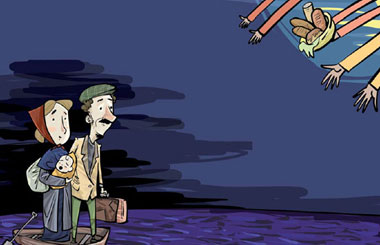Olympic swimmers spark interest in cupping therapy
Updated: 2016-08-22 07:46
By Wang Xiaodong and Shan Juan(China Daily)
|
|||||||||
Sales of devices surge during the Games as people in more countries develop awareness
Traditional cupping therapy gained more popularity among Chinese during this summer's Olympics, with images of the red-stamped back of US swimmer Michael Phelps circulating on the internet.
Sales of cupping devices at tmall.com, an e-commerce platform, began to rise on Aug 8, and by Aug 16 daily sales of the devices had doubled, according to Alibaba, which owns the platform.
Niu Niu, a saleswoman at an online shop that sells cupping devices on Taobao.com, said inquiries about cupping devices have increased recently, with an average about 600 customers inquiring about the products online every day.
"More people are interested in cupping. Even Olympic gold medalists are using cupping," she said.

Summer is usually the peak season for cupping device sales, as many Chinese believe they should treat diseases acquired in winter during summer, she said.
Duan Qingjie, a shop owner on Taobao, said in the past few days that the sales volume of the devices was about the same as before, but he is optimistic that the exposure of the therapy during the Olympics will result in more recognition of the therapy and increased sales in the future.
The cupping devices Duan sells use a glass cup connected to a simple vacuum pump. Users can place the device on their bodies and draw air out of the cup by themselves. A complete set of the self-assist devices, which includes 24 cups of various sizes, sells for 58 yuan ($8.70) online, he said.
Evolving practice
Although it's an ancient therapy that has been applied in China for more than 2,300 years, cupping has been evolving, based on new science and technology. At the same time, devices suitable for use by consumers have been promoted in the market, making the technique more accessible, said Zhao Jiping, a senior acupuncturist at Beijing University of Chinese Medicine's Dongzhimen Hospital.
However, users should acquire basic knowledge and skills before using such devices themselves to avoid injury, she said.
Cupping has also been accepted by people in many other countries, Zhao said.
"I have received patients from the United States, Germany, Spain, Japanand South Korea," she said. "They seek the therapy for various diseases, including waist pain, arthritis, neck bone pain, hypertension and asthma."
Cupping therapy can be used on a wide range of body areas, especially to alleviate pain in the neck, arms, waist, back and legs, Zhao said.
Although a traditional technique, modern science shows that it works, she said. For example, the negative pressure caused by cupping can cause some tiny blood vessels to break, resulting in a bruise on the cupping area. This is actually a positive stimulation, as the malfunctioning area can then return to normal.
Also, the heat applied during the therapy can promote blood circulation and improve metabolism on the problem area, which can contribute to healing, she said.
Normally, cupping is applied in muscle areas, such as the back, neck and waist, and it can work differently on different parts of body. It can even be applied to the face in case of facial paralysis, Zhao said.
Zhou Guoping, an acupuncturist in Southern Medical University in Guangzhou, Guangdong province, said cupping is not for everyone, and people with certain conditions should not rely on cupping, such as those with skin injuries and those with blood diseases, as the technique may worsen such syndromes, he said.
Contact the writers at wangxiaodong@chinadaily.com.cn
|
Taoists at the Jinding Temple of Luoyang, Henan province, offer free cupping services to local residents on Aug 14. Ju Zhongwang / For China Daily |
(China Daily 08/22/2016 page8)
Today's Top News
Brexit will affect Chinese investment
Trump says he regrets past remarks
Ukrain to declare martial law if crisis deepens
Violence against Chinese in the UK under-reported
Harrowing video shows boy pulled from Aleppo rubble
China, Myanmar agree to solve suspended dam issue
Suu Kyi's visit seen as bid to boost friendship
Apple mulls R&D center in China
Hot Topics
Lunar probe , China growth forecasts, Emission rules get tougher, China seen through 'colored lens', International board,
Editor's Picks

|

|

|

|

|

|








